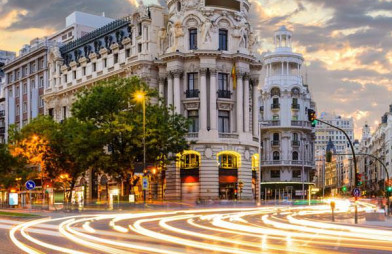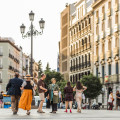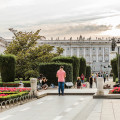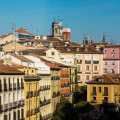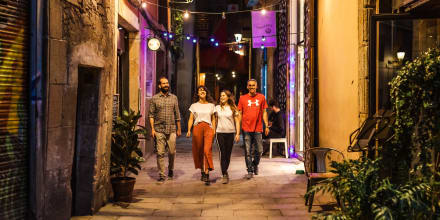
By Joanna Matyjasiak, Art Historian Madrileña
Madrid, once the capital of an empire where the sun never set is now the city that never lets you get bored. It attracts gourmands, fashionistas, flamenco maniacs, football funs, art lovers and adventure seekers. Exploring the best of Madrid in two days is a challenge, especially when you are a first-time visitor. But with our guide to 48 hours in Madrid you’ll be able to make the most of your time here and not get lost! So let us show you the best of Madrid, so you can be sure not to miss its beloved landmarks, hidden gems and local secrets.
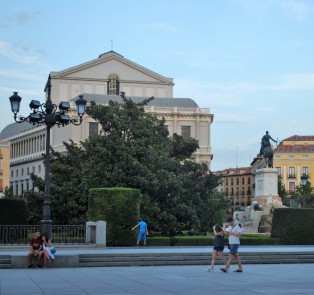
Day 1- a palace fit for a king
Start your day in Plaza de Oriente, a spacious square with a little park and the equestrian statue of king Philip IV in the middle, situated between the Royal Theatre and the Royal Palace. The Palace and the nearby Cathedral of Santa María de la Almudena are definitely worth a visit! The Palace is the biggest one among European royal seats, located where an Arab fortress was founded on the Manzanares River in the IX century; in this exact spot there was once an Arab castle called Alcázar. After the reconquest of Christians in XI century, Madrid became the town of Castile and was inhabited by three cultures: Christians, Arabs and Jews. The Cathedral was not completed until very recently, but its size is as impressing the Palace´s. You may enter its cupula and admire marvellous view on the surroundings from the lookout atop. It is exactly here where Madrid was born over a thousand years ago! You can still spot the remains of the original Arabic walls
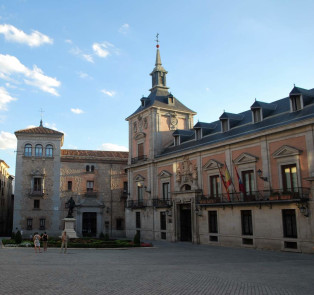
Delve into history
After visiting the Cathedral follow head east. Calle Mayor, the Mayor Street, is full of palaces and houses from the past centuries. It will lead you to Plaza de la Villa, a place where ages of history of Madrid are represented by various styles of architecture, like the Gothic and Mudejar of the Lujanes House and the Renaissance of the Cisneros Palace. The most splendid building in this square is, however, Casa de la Villa. It was erected in the XVII century to house the Madrid Council and the prison.
Continue your walk towards the east and you will get to Mercado de San Miguel, a very elegant marketplace from XIX century - it’s worth staying here for a while to savour some Spanish wine and tapas. Then you should enter another square: Plaza Mayor where the history of Madrid as a capital city began. It was in the 1561 when Spanish court was transferred from Toledo to Madrid. The construction of Plaza Mayor was ordered by King Filip III, as a new place for commerce and cultural performances like bullfights, theatre spectacles, religious ceremonies and the rituals of public penance (auto de fe) introduced by the Inquisition. The king watched all these events from the balcony of Casa de Panadería, the Bakery House. Its façade is decorated with the contemporary frescoes, so you certainly won’t miss it.

Refuel with delicious cuisine
Among the restaurants of Plaza Mayor, one is of special interest. It is called Museo del Jamon (Ham’s Museum), which gives visitors an opportunity to get acquainted with tastes of different types of Spanish ham, as there is certainly not just one ham in Spain! “Jamón serrano”, “ibérico” or “de bellota” are made in different ways and are examples of the long tradition of Spanish ham production.
The next square you should visit is Puerta del Sol, where you’ll find the kilometer zero, a graphic representation on the pavement right in the front of Casa de Correos. Kilometer zero is the point where the main 6 national Spanish highways have their symbolic beginning. Step on it, make a wish, and don´t blame anyone if it comes true! On the south of Puerta del Sol you’ll find the Literary quarter: Barrio de las Letras, where you can visit many places related to famous Spanish writers: Cervantes, Quevedo, Lope de Vega and many others. There is also a popular square here: Plaza de Santa Ana where you can take a break after your busy day and sip some wine that’s known as tinto de verano, a light version of red wine with soda, ice and fruits, served in the summer. You can finish your first day with a flamenco live show in one of famous flamenco venues like Casa Patas o Villa-Rosa.

Day 2- Parks and recreation
Why not begin the second day in Retiro Park? This spacious green area was once a royal property, and in the XVIII century the Astronomical Observatory was built here as a part of the Enlightenment plan for Spanish science development. The park has plenty of fountains and monuments, kilometres of bicycle routes and even a pond to glide across in a boat. Madrid´s locals come here for a picnic on sunny days. If you go out through one of the western gates of the park you’ll be very close to the Prado Museum, one of the largest ancient galleries in the world. The contemporary Spanish painter, Antonio Saura, used to say that it houses the largest number of masterpieces per one square meter, and he was right. Titian, Velazquez, Bosch, Goya, El Greco, Rubens and countless painters are represented in the collections of Prado. Most of the paintings belonged to Spanish kings.
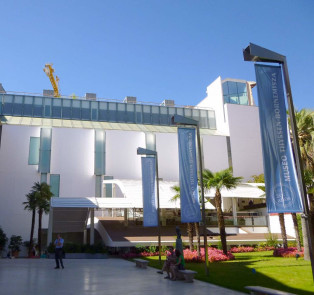
Art and culture
Apart of Prado, Madrid has also the Museum of Thyssen-Bornemisza with European art from the medieval times to the XX century, and Reina Sofia, the contemporary art museum, which displays paintings of the most notable Spanish artists, among them “Guernica” of Picasso. Another option may be Santiago Bernabéu, home stadium of Real Madrid. If there’s no game on, football fans can enjoy the modern interactive exhibition which allows the visitor to experience a day in the life of one their favourite footballers!
After the intense day of museum visiting, you can enjoy a meal in one of the restaurants in the multicultural district of Lavapies. Try pulpo a la gallego if you like octopus or gazpacho if you are rather thirsty than hungry. Then take a metro to reach more distant attractions like Las Ventas. Not to everyone’s tastes, this is one of Madrid´s bullrings, which is also one of the biggest in Spain!
Hello, curious traveler!
Embark on a unique experience with
Hello, curious traveler!
Embark on a unique experience with
City Unscripted Madrid.
Our personalized, private tours, led by local hosts, make you feel like
you’re exploring the city with a knowledgeable friend.
We’ll take you to well-known sights and reveal Madrid’s hidden gems, unveiling stories typically
missed by traditional tours. So unscript your journey, and see Madrid through the eyes of our local hosts!
Top private experiences in Madrid
We’ll pair you with the perfect host
There is no better way to see a city than with a friend who lives there. This is why we carefully match guests with their perfect host based on interested, personality and type of experience so they can discover a city beyond the tourist trail.
Make your inbox happy with our travel tips and inspiration as well as exclusive offers and first access to new services.
